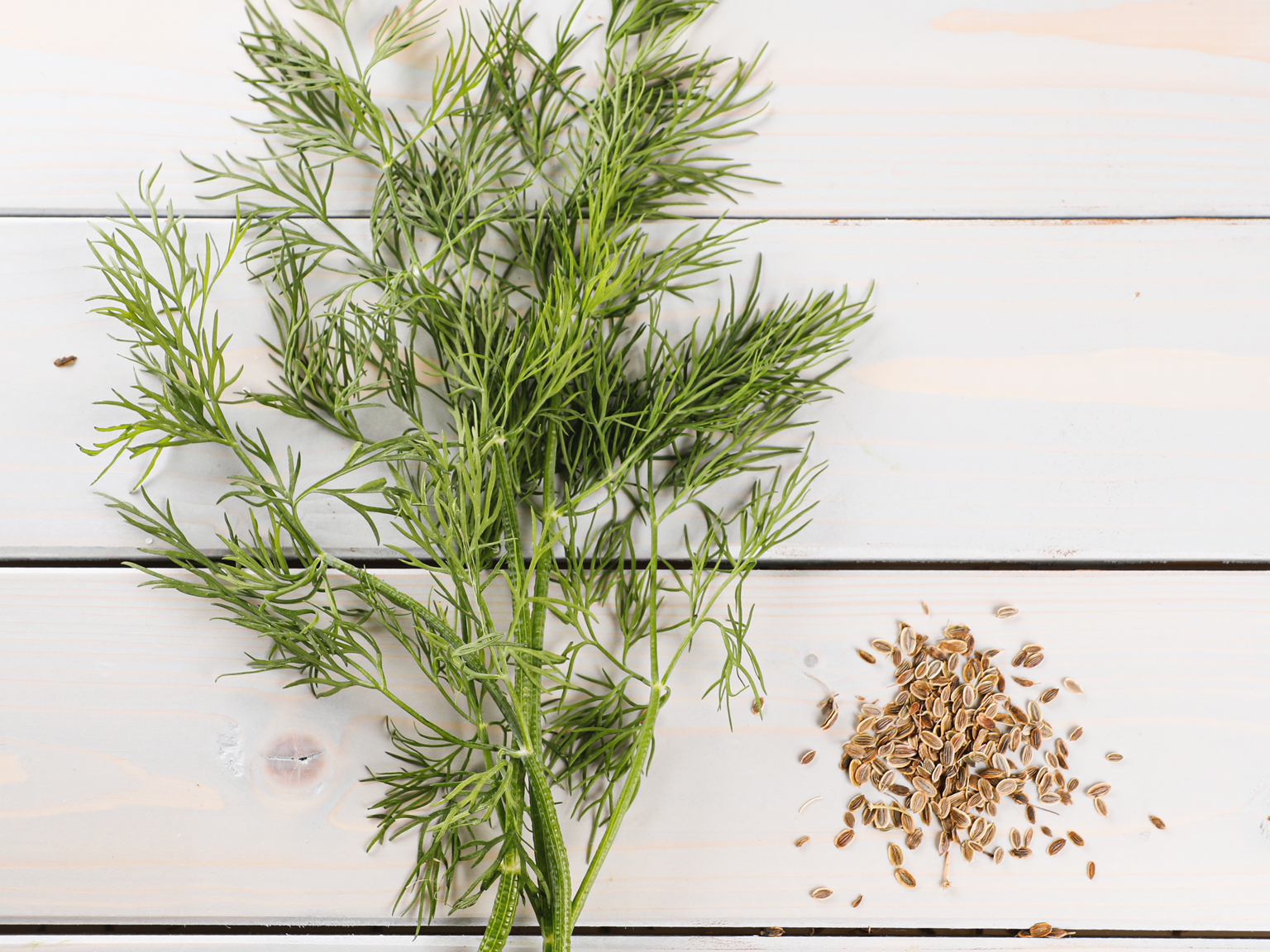Dill immediately brings to mind potatoes, canned cucumbers and pickled herring with pumpernickel, gravlax and borsch. It is one of the basic plants widely used in Eurasia. It’s a staple in many cuisines in Baltic region and Scandinavia, central and eastern Europe. Dill’s feathery, thin, flat leaves can be used as a herb. Its oval little fruits are also known as dill seeds – as a spice. They are, however, not used as much as the leaves. Which is a pity, because seeds are definitely worth giving a try.
The plant is a member of the Apiaceae family where many aromatic plants live: caraway, fennel, cumin, anise, parsley, and lovage. These (and many others!) plants share similar flavour compounds, which makes dill seeds reminiscent to that of coriander. But you can still recognize familiar notes of a dill leaf when sampling its seeds. That is great because it makes dill a very versatile product with a distinct earthy kick.
Dill seeds are very good at declaring themselves in soups. Some opt for grinding the seeds, but it’s not really necessary. You can just give them a quick pan toast to unlock their fragrant flavour compounds. And when you start smelling the aroma, toss them immediately into the broth you are cooking. This spice also compliments roasts and braises. It goes well with meats, squashes, and sour milk products. And of course, it’s heavily used in pickling: carrots, beets, pattypan squashes, tomatoes, cucumbers. Take famous dill pickles for instance. You don’t really need much time to get crunchy, tasty, super fragrant cukes to your table. Wash and slice 10-12 cucumbers lengthwise in quarters, divide them between the picking jars – pack tightly but do not overcrowd. Half 4-6 garlic cloves, and divide them with 2 tsp of mustard seeds, 2 tsp of peppercorns and 2 tsp dill seeds among each jar. Then heat 2 cups of water with 2 cups of white vinegar, add 60 g / ¼ cup of sugar and 2 Tbsp of salt. Warm the mixture, stir until everything dissolves, let cool and pour over the cucumbers. Set aside the jars for a couple of hours and then store in the fridge. They will be good in two days but their best flavour will develop in 4-5 days.
As a herb, dill is quite fragile and wilts fast in the fridge. To keep it longer, wash a bunch of dill, dry it quickly in a salad spinner, then place it in a tall glass full of water, like a flower bouquet, cover with a zip lock bag, and put the whole composition into the fridge. To keep dill even longer, blend it with a splash of water in a blender or a food processor. Puree until smooth and then spoon the resulting paste into an ice cube tray. When the mixture freezes hard, transfer dill cubes into a plastic bag and store in the freezer until you feel the urge to add some freshness into the dish. Then draw a couple of cubes and toss them right into the cooking vessel to brighten everything up a little.











What do you think?